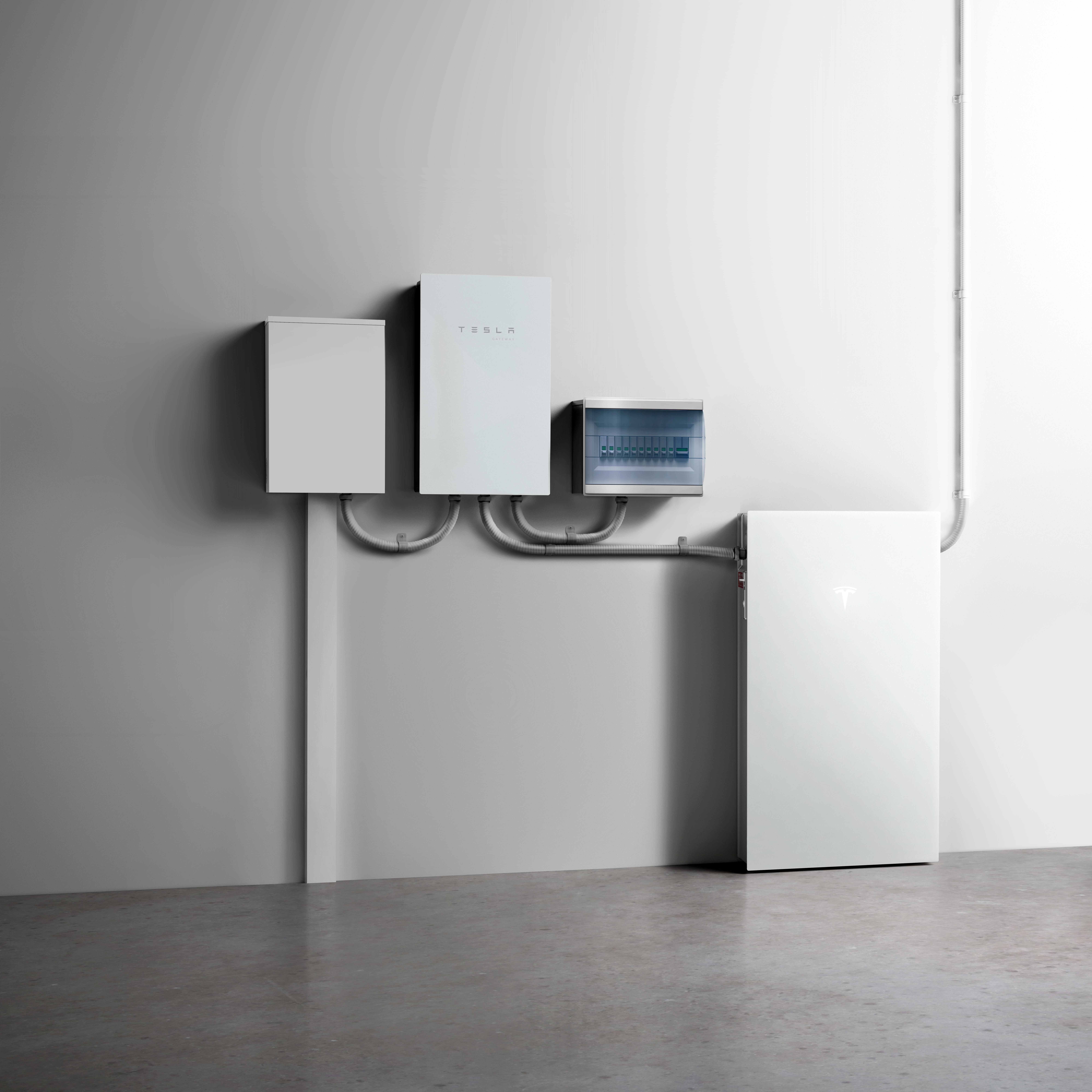Powerwall System Design
A Powerwall system consists of at least one Powerwall battery and a Backup Gateway. Powerwall, in conjunction with a Backup Gateway, will power the home during a power outage. When the system is installed with solar, Powerwall stores solar energy produced to power the home when the sun isn’t shining.

Typical System Design
The Powerwall system configuration installed at your home may vary, depending on:
- The size of your solar system
- The model of your Powerwall
- How many Powerwalls you have purchased with solar
Note: Installation should only be performed by a Tesla Certified Installer.
System Components
There are many variables such as climate, home orientation and energy use goals, that make each home unique. For a final detailed recommendation on system design, talk to your Tesla Certified Installer. Typically, your Powerwall system consists of:
Powerwall 3 or Powerwall 2
Powerwall 3 features an integrated solar inverter allowing solar to be connected directly for high efficiency. With a higher power output, it can provide whole home backup to most homes and support larger solar systems. Like Powerwall 2, Powerwall 3 is also capable of being added to existing solar systems and is compatible with all major inverter brands.
Powerwall 3 Expansion
Powerwall 3 Expansion is an attachable unit designed for Powerwall 3 owners to increase backup duration and energy needs at a reduced cost. Powerwall 3 Expansion units provide an additional 13.5 kWh of energy per unit. Powerwall 3 Expansion units can be easily installed with Powerwall 3.
Backup Gateway
Backup Gateway controls system operation, detects grid outages, enables backup power from the battery and functions as a site meter. Backup Gateway is installed with Powerwall 3 and Powerwall 2 to measure energy coming from your solar system and Powerwall. Backup Gateway also acts as a gateway between Powerwall and the grid to disconnect Powerwall from the grid during a power outage.
Additional Electrical Hardware
Additional electrical hardware includes electrical panels, conduit, disconnects, meters and more. These are installed based on site needs and code requirements.